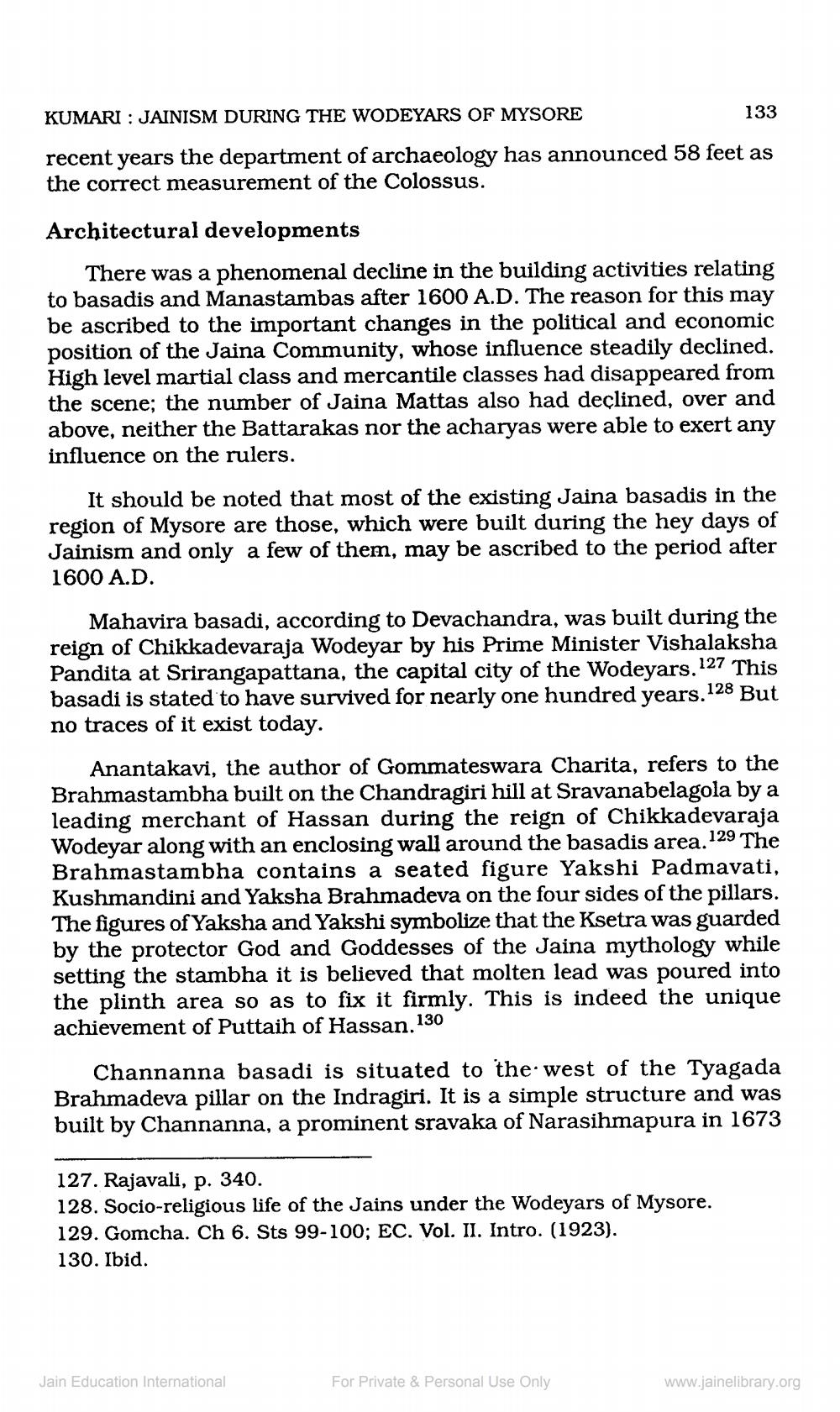________________
KUMARI : JAINISM DURING THE WODEYARS OF MYSORE
133 recent years the department of archaeology has announced 58 feet as the correct measurement of the Colossus.
Architectural developments
There was a phenomenal decline in the building activities relating to basadis and Manastambas after 1600 A.D. The reason for this may be ascribed to the important changes in the political and economic position of the Jaina Community, whose influence steadily declined. High level martial class and mercantile classes had disappeared from the scene; the number of Jaina Mattas also had declined, over and above, neither the Battarakas nor the acharyas were able to exert any influence on the rulers.
It should be noted that most of the existing Jaina basadis in the region of Mysore are those, which were built during the hey days of Jainism and only a few of them, may be ascribed to the period after 1600 A.D.
Mahavira basadi, according to Devachandra, was built during the reign of Chikkadevaraja Wodeyar by his Prime Minister Vishalaksha Pandita at Srirangapattana, the capital city of the Wodeyars. 127 This basadi is stated to have survived for nearly one hundred years.128 But no traces of it exist today.
Anantakavi, the author of Gommateswara Charita, refers to the Brahmastambha built on the Chandragiri hill at Sravanabelagola by a leading merchant of Hassan during the reign of Chikkadevaraja Wodeyar along with an enclosing wall around the basadis area.129 The Brahmastambha contains a seated figure Yakshi Padmavati, Kushmandini and Yaksha Brahmadeva on the four sides of the pillars. The figures of Yaksha and Yakshi symbolize that the Ksetra was guarded
y the protector God and Goddesses of the Jaina mythology while setting the stambha it is believed that molten lead was poured into the plinth area so as to fix it firmly. This is indeed the unique achievement of Puttaih of Hassan. 130
Channanna basadi is situated to the west of the Tyagada Brahmadeva pillar on the Indragiri. It is a simple structure and was built by Channanna, a prominent sravaka of Narasihmapura in 1673
127. Rajavali, p. 340. 128. Socio-religious life of the Jains under the Wodeyars of Mysore. 129. Gomcha. Ch 6. Sts 99-100; EC. Vol. II. Intro. (1923). 130. Ibid.
Jain Education International
For Private & Personal Use Only
www.jainelibrary.org




